Where’s Uncle Agent on his / her bicycle?
Where is the district police officer?
“Catching crooks is of course important, but a good local police officer hears and sees everything if it is accessible. As a result, major cases, also when it comes to terror, can be prevented,” says the SMV.
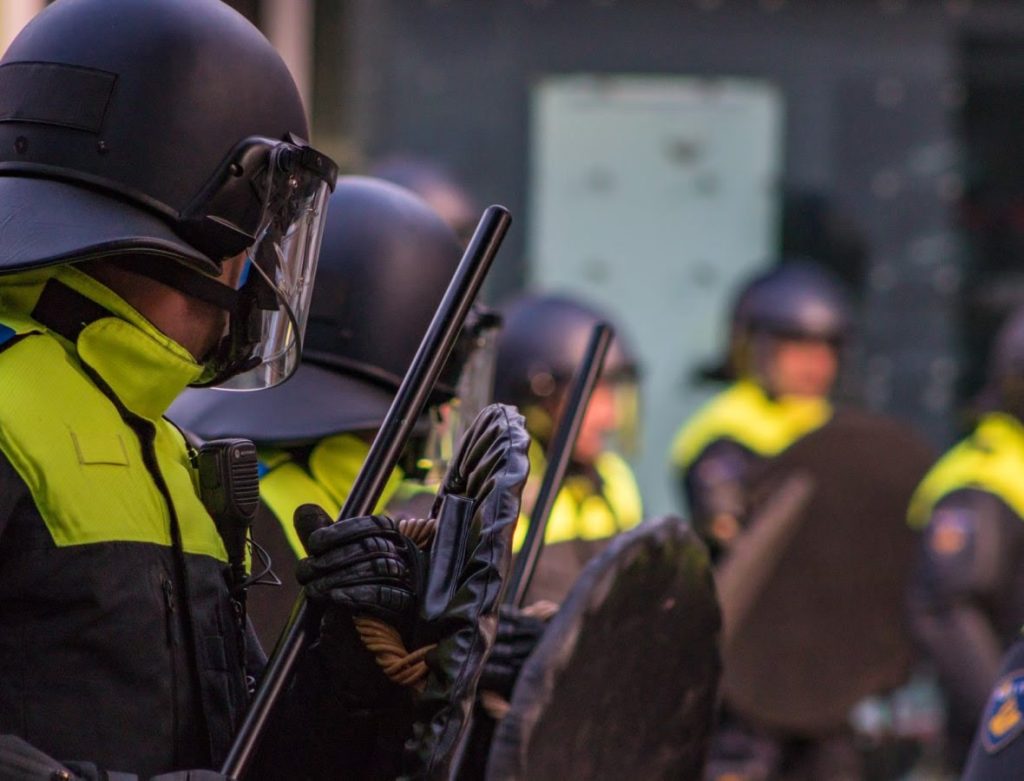
“Politiechef Paul van Musscher illustreert de totale systeemrot, die zich sinds de kabinetten Rutte in een steeds hoger tempo door de fundamenten van onze democratische rechtsstaat vreet. Onder zijn leiding gleed het Haagse politiekorps af tot een losgeslagen wetteloze organisatie, omringd door schandalen zoals bijvoorbeeld de dood van Mitch Henriques in 2015, seksuele intimidaties, brutal violence (also against the elderly) and formal complaints of discrimination…”
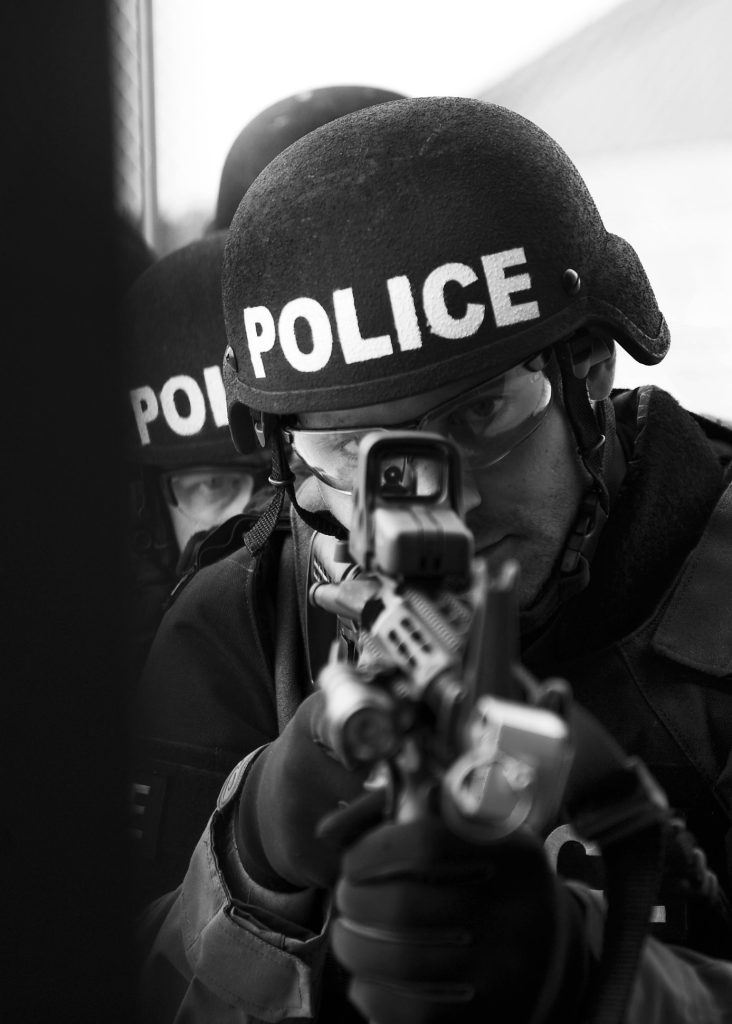
A U.S. police officer armed with a holographic sight-equipped M4 carbine rifle during a training exercise to prepare to control demonstrators against governmental narratives (like forced vaccinations)
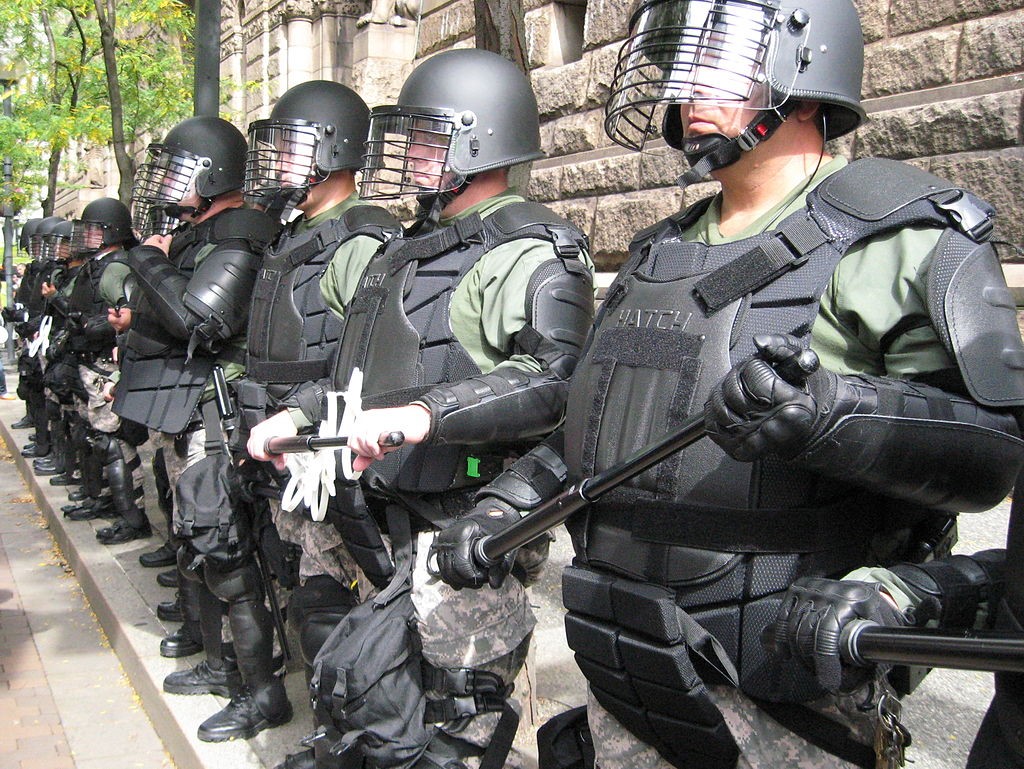
Riot police at the 2009 G20 meeting in Pittsburgh, USA
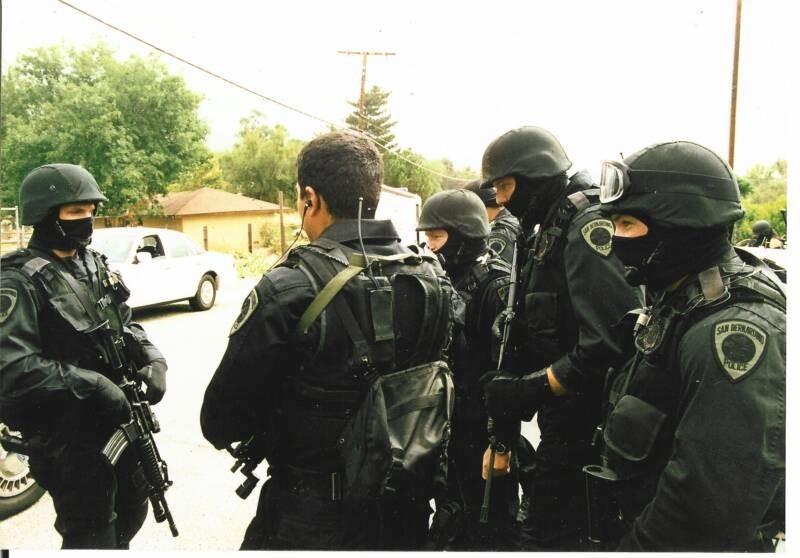
A police SWAT team with automatic weapons, rubber bullets, tear gas, and pepper spray with helmets, masks to stay anonymous, and body armor
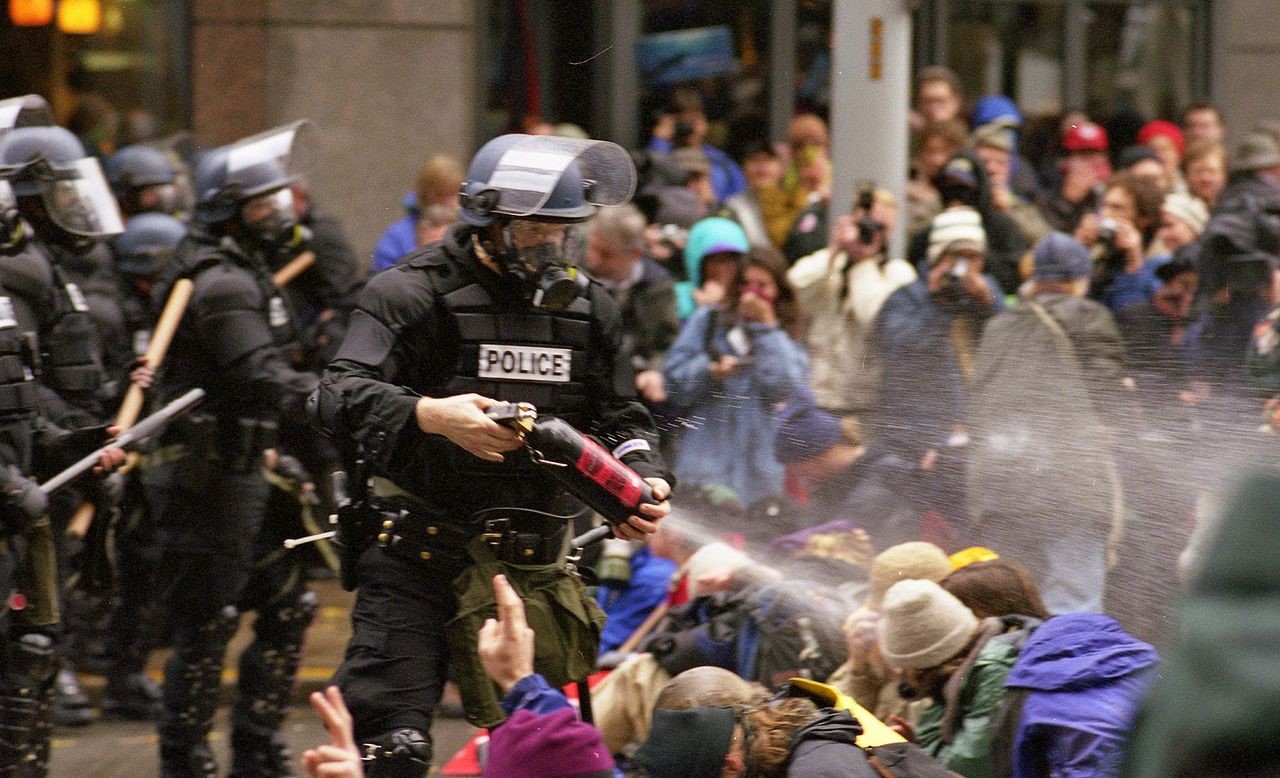
Completely militarized police officers spaying pepper spray at peaceful demonstrators (including the elderly) who exercise their rights as per the Bill of Human Rights and civil liberties to be allowed to demonstrate peacefully
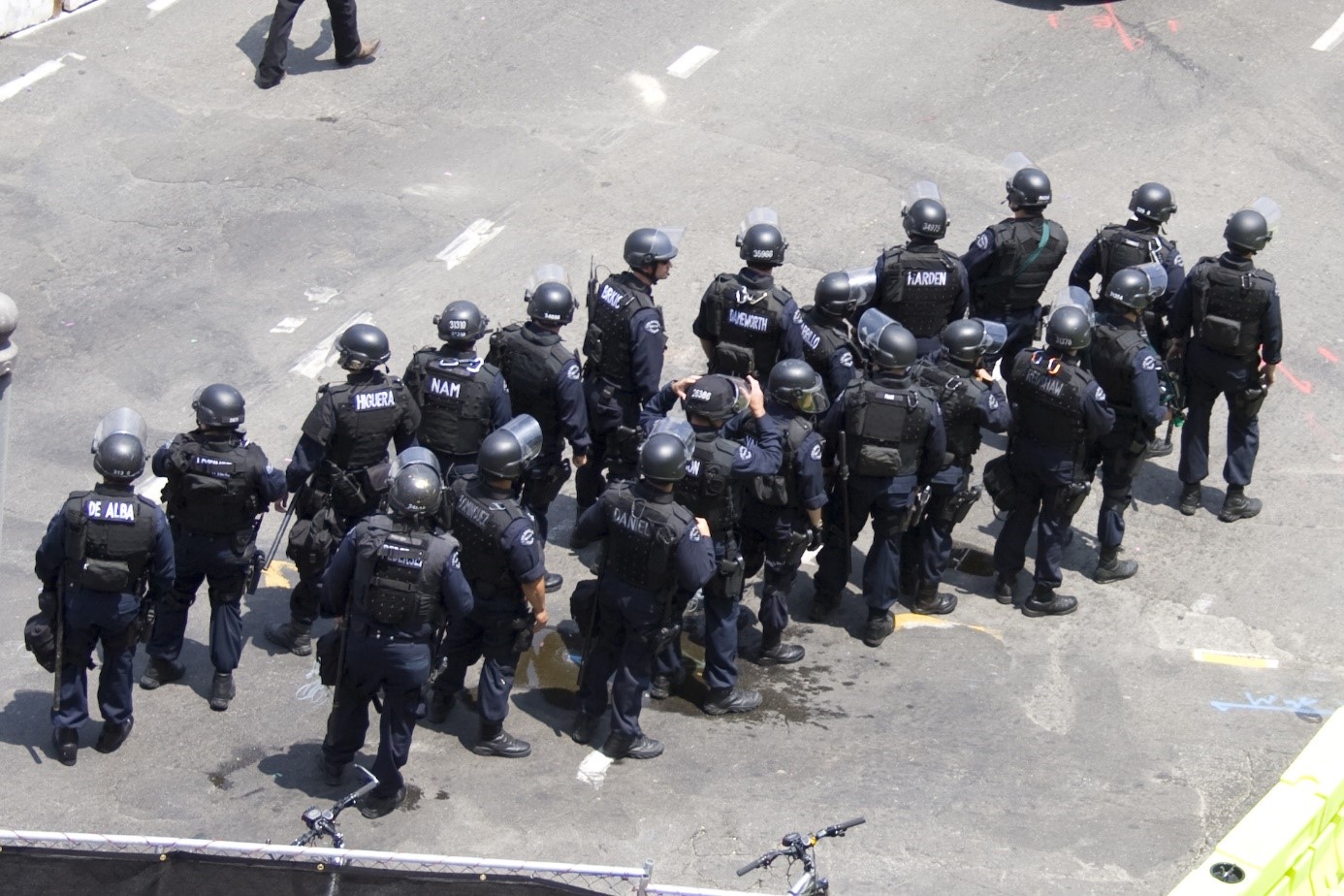
A large group of Los Angeles Police Department (LAPD) SWAT officers in tactical gear at a peaceful Lakers parade in 2009
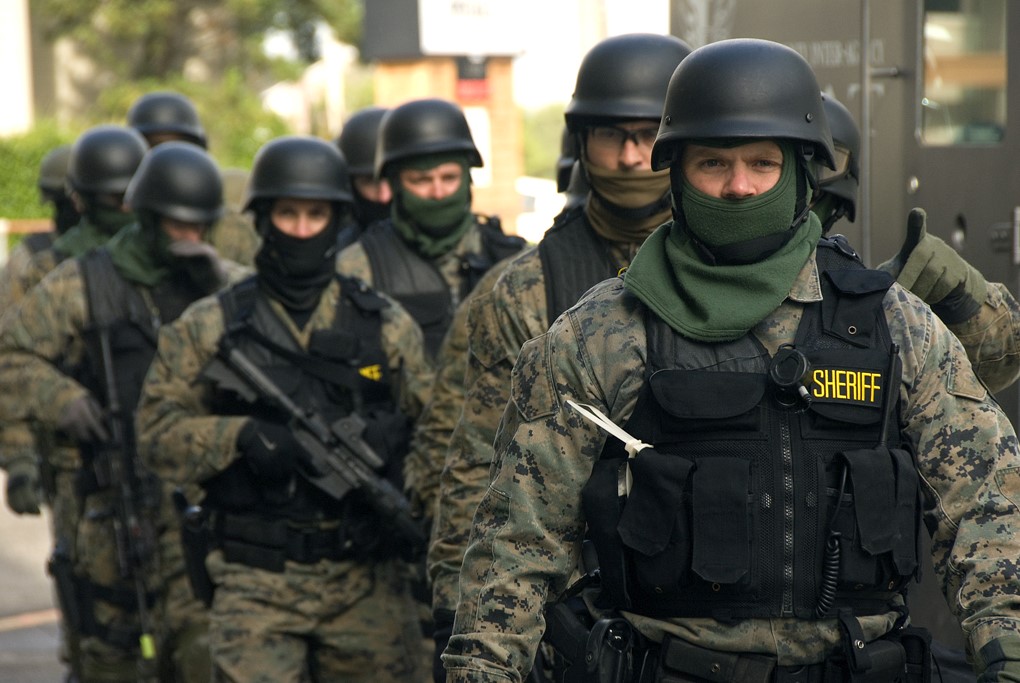
Special Weapons and Tactics (SWAT) team members, all armed with assault rifles, preparing for an exercise in beating and assaulting their citizens
Where is my familiar Oom Agent (Uncle Police officer)?
Where’s Uncle Agent? In The Netherlands, no longer in the streets in any case and that worries the Society and Safety Foundation (SMV). According to the SMV, the police focuses too much on tracing crooks and demonstrators against governmental narratives; and is too little concerned with public order and petty crime.
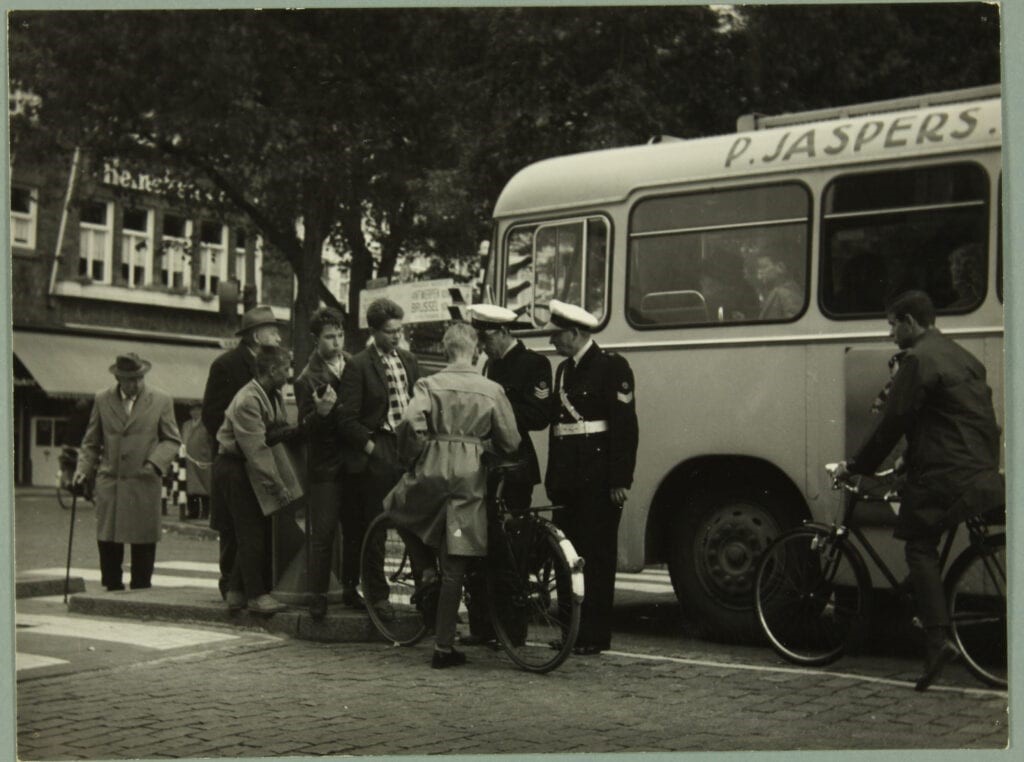
In The Netherlands, brutal police actions against its own (peaceful) citizens force municipalities to fulfill this task themselves. For example, a colorful collection of special investigating officers, city guards, and private security guards appear on the street. Actually, a new kind of municipal police, says the SMV.
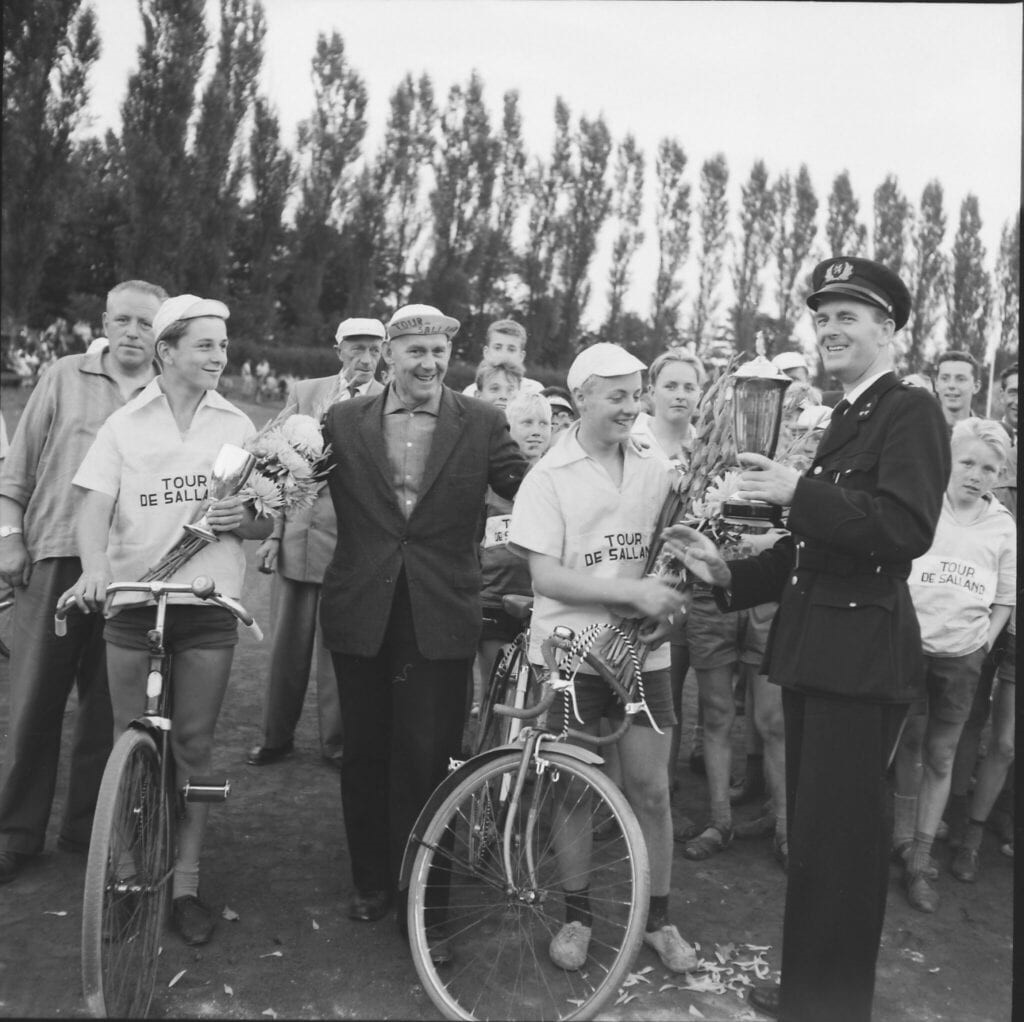
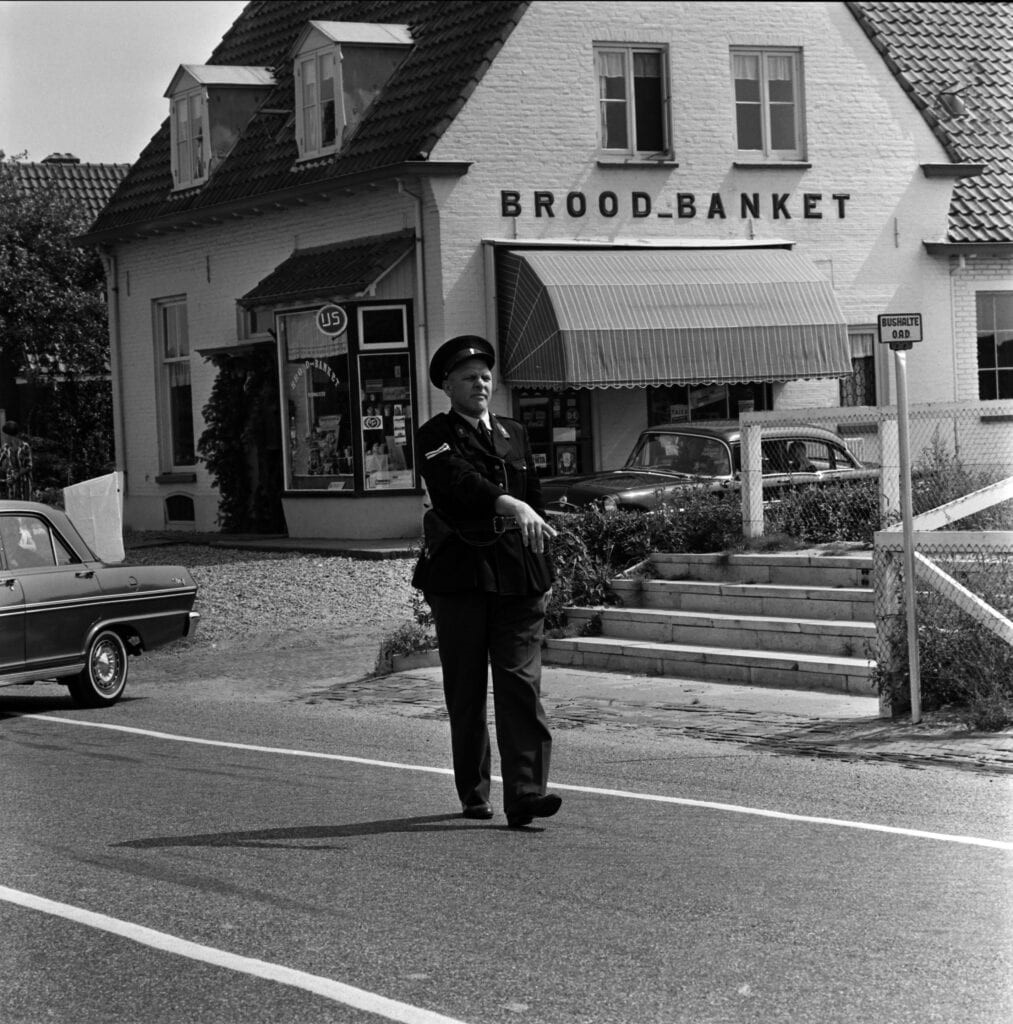
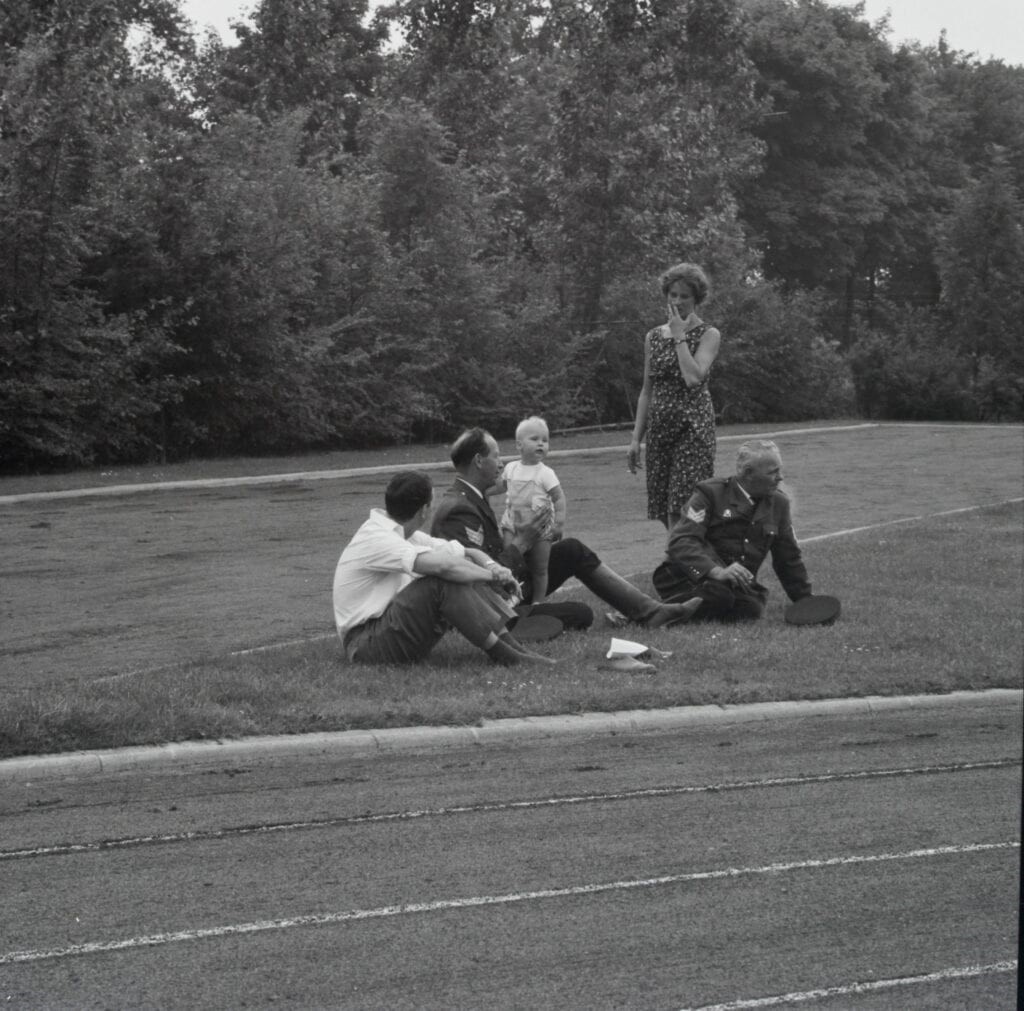
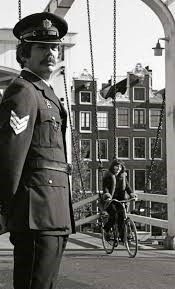
Policeman in Amsterdam; unarmed and walking around alone in his district
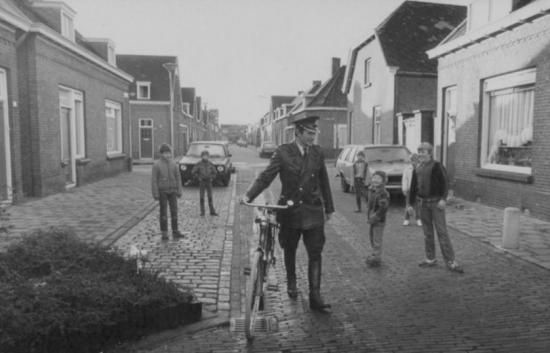
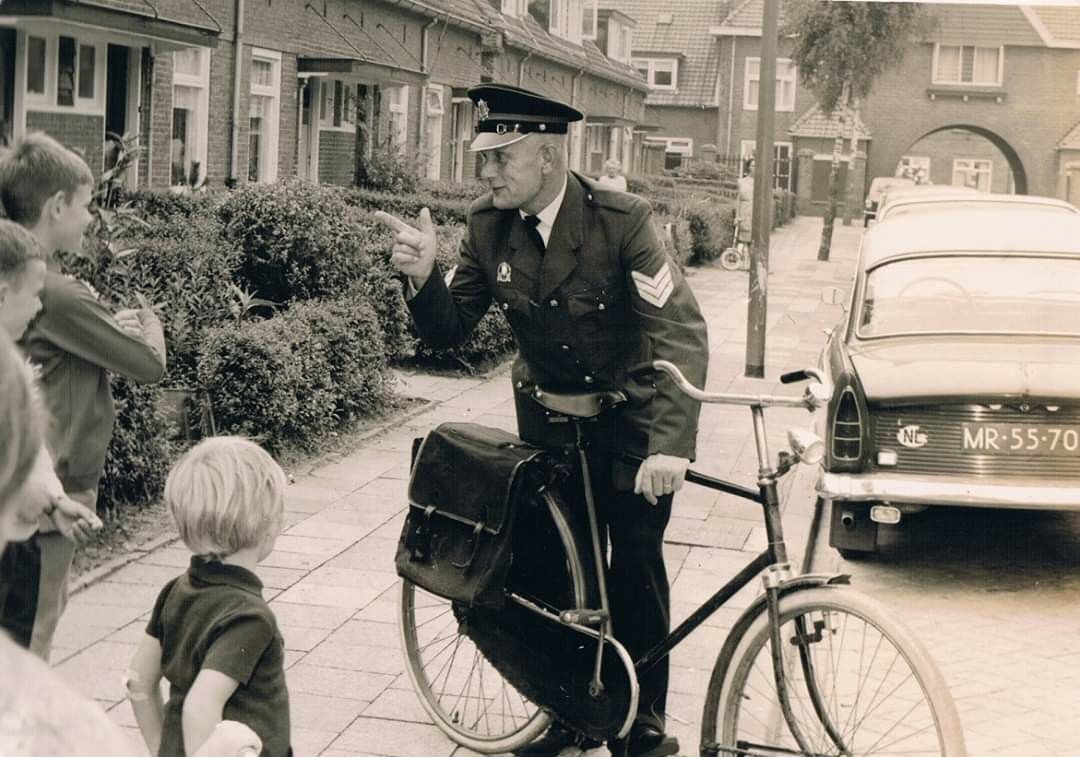
All Dutch citizens long for the time to come back when policemen on their bicycles were your best friends: „Oom Agent“ (my Uncle Police Officer).
Concerns and responses
Community policing
The drift toward militarization concerns police officers and police policy analysts themselves. U.S. community policing grew out of the Peelian Principles of the London Metropolitan Police which emphasizes the relationship between the police and the community they serve. Police academy education patterned after a military boot camp, military-type battle dress uniforms and black color by itself may produce aggression, as do the missions named wars on crime, on drugs, and on terrorism.
In a 2013 piece in the newsletter of the DOJ’s Office of Community Oriented Policing Services (COPS), COPS Senior Policy Analyst Karl Bickel warned that police militarization could seriously impair community-oriented policing. Bickel wrote that accelerating militarization was likely to alienate police relationships with the community, and pointed to a variety of factors that contribute to militarization, including the growth of SWAT; the increased prevalence of dark-colored military-style battle dress uniforms for patrol officers (which research suggests has a psychological effect of increasing aggression in the wearer), and “warrior-like” stress training in policing training, which fosters an “us versus them” approach.
Use of force
A report by The Marshall Project looking at data from the early 2010s investigated the mindset of “guardian” versus “warrior” by calculating the rate of complaints about excessive use of force against police officers who had served in the military versus police officers in general. It found higher rates for veterans in Boston (28% vs. 17%) and Miami (14% vs. 11%), but found no difference for Massachusetts State Police.
A national survey in August 2016 by the Pew Research Center found police officers who had served in the military were more likely to have fired their weapons while doing police work (32% vs. 26%).
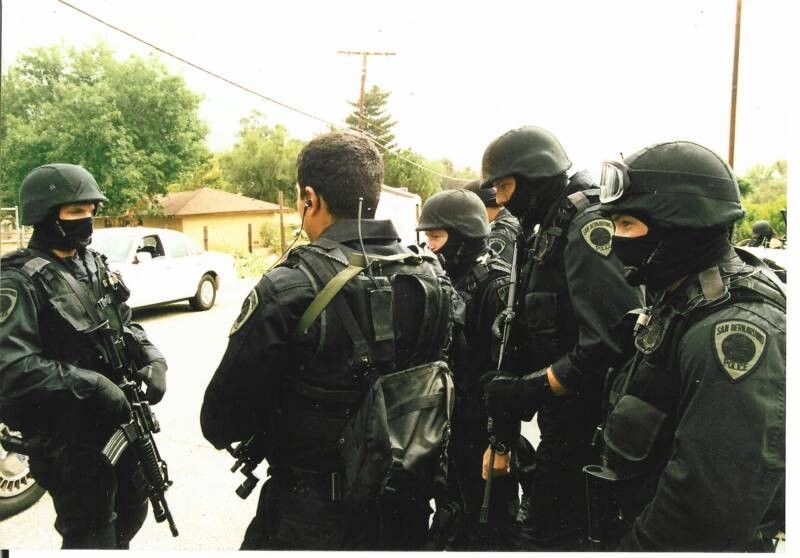
A police SWAT team with automatic weapons, helmets, and body armor
Viewpoints
The ACLU has stated that local police use these “wartime weapons in everyday policing, especially to fight the wasteful and failed drug war, which has unfairly targeted people of color”. Travis Irvine from The Huffington Post referred to how “local police forces now roll tank-like vehicles through our streets”. Dave Pruett from The Huffington Post raised concerns about “Military Humvees, still in camouflage and mounted with machine guns, in the hands of municipal police [and] SWAT teams of police in full riot gear, bristling with automatic weapons.” Former Seattle Police Chief Norm Stamper published an essay arguing that “the current epidemic of police brutality is a reflection of the militarization … of our urban police forces, the result of years of the ‘war on drugs and the ‘war on terror”.[114] Senator Rand Paul has proposed the demilitarization of U.S. police departments, stating that “The images and scenes we continue to see in Ferguson resemble war more than traditional police action.”
Chuck Canterbury, the president of the Fraternal Order of Police, argued that the equipment received from the federal government had been properly de-militarized and that it was being used to protect civilians from violent crime. He further stated that the use of the equipment by law enforcement was necessary to protect civilians, since mass shootings have taken place across the United States, even in small towns. Responding to claims that law enforcement officers were being given tanks, Canterbury argued that the vehicles being used by law enforcement were not armed and that they were being used across the United States to protect other officers.
On March 23, 2015, a Department of Justice investigation into the use of deadly force by the Philadelphia Police Department in the period from 2007 to 2013 found that the way officers are trained may be a contributing factor to excessive use of deadly force. The report found that a) many officers have the mistaken assumption that being “in fear of their life” is justification for the use of deadly force, but fear should not be a factor – it’s a reasonable belief that deadly force is necessary to avoid death or serious injury; b) instruction about policies on the use of force is confusing; c) most training scenarios end in some type of use of force and officers are rarely, if ever, trained how to resolve confrontations peacefully; d) 80% of suspects shot by police were black – black suspects were also more than twice as likely to be shot due to a “threat perception failure”; and e) no consistent procedure was in place for shooting investigations, no audio or video recordings of officer interviews were being made, and officers are often interviewed months after the incidents.
In a report released in June 2015, Amnesty International alleged that the United States does not comply with the UN Basic Principles on the Use of Force and Firearms by Law Enforcement Officials (against ist own peaceful citizens).
Two independent, peer-reviewed studies published in 2020 have found that militarized police officers are neither safer nor more effective at reducing crime.
Intelligence-gathering and surveillance
In a January 2017 report Cato Institute criminal justice policy analyst Adam Bates argues that in the United States, “an increasingly militarized domestic police force” is characterized by “mission creep [that] has not been limited to weapons and tactics. What the War on Drugs has done for police militarization, the War on Terror is now doing for police intelligence gathering, and the privacy of millions of Americans is at risk.”
The ACLU has raised concerns about military involvement in the surveillance of peaceful protesters. The ACLU pointed, for example, to the U.S. Department of Defense (DOD) issuance of Threat and Local Observation Notices (TALON) depicting Veterans for Peace and other anti-war groups as “terrorist threats”. The ACLU also raised concerns about military involvement in “fusion centers”.
Civil liberties
The federal Posse Comitatus Act of 1878 forbids the U.S. military from conducting domestic law enforcement activities, embodying “the traditional American principle of separating civilian and military authority”. There have been exceptions made, however: in 1981, Congress enacted legislation allowing military involvement in drug interdiction at U.S. borders, and eight years later “designated the Department of Defense as the ‘single lead agency’ in drug interdiction efforts”. In the late 1990s, following the Oklahoma City bombing, there were proposals to further limit the act to allow military participation in law enforcement activities in chemical/biological weapon and terrorism cases. These anti-terrorism proposals were criticized by some commentators on the basis that they were a threat to civil liberties. Writers such as U.S. Air Force officer Charles J. Dunlap, Jr. critiqued proposals to use the military for internal security, on the basis that “No one should suffer the illusion that military forces could ever execute the laws with the same sensitivity to civil liberties as regular police forces.” Dunlap argued that “the central imperatives of military service” was “destroying targets and undermining enemy command and control”—a skill that does not necessarily carry over into intelligence-gathering and investigation. Under this view, “a successful politicization of the armed forces may well render it incapable of defeating authentic external military threats”.
The accelerating militarization of regular law enforcement during the War on Drugs and post-September 11 War on Terror, however, prompted some commentators to express alarm at the blurring of the distinction between civil and military functions, and the potential to erode constraints on governmental power in times of perceived crisis. A 2010 paper published in the journal Armed Forces & Society examined “role convergence, that is, evidence that significant segments of police operations in the United States have taken on military characteristics; and evidence indicating that many U.S. military initiatives have taken on policing characteristics”. It concluded that “for individual citizens and for society as a whole, at least one aspect of role convergence—the militarization of the police—is potentially troublesome. If this convergence results in the police adopting not only military-type tactics and procedures but also military attitudes and orientations, the convergence may seriously threaten traditional civil rights and liberties.”
A 2014 ACLU report, War Comes Home: The Excessive Militarization of American Policing concluded that “American policing has become unnecessarily and dangerously militarized …” The report cites an increase in unnecessarily aggressive raids, “tactics designed for the battlefield”, and equipment such as armored personnel carriers and flashbang grenades—as well as a lack of transparency and oversight. Writers such as Ilya Shapiro and Randal John Meyer have argued that militarization leads to “extreme constitutional violations”.
SWAT teams and military-style raid tactics
Peter Kraska, a criminal justice professor at Eastern Kentucky University, found that the prevalence of SWAT teams, among police agencies serving populations of at least 50,000 people, doubled from the mid-1980s to the late-1990s, rising to 89% of police agencies by the end of this time period. Among smaller police agencies (covering areas with between 25,000 and 50,000 people), the proportion of SWAT teams rose from 20% in the mid-198-s to 80% in the mid-2000s. Kraska says: “When people refer to the militarization of police, it’s not in a pejorative or judgmental sense. Contemporary police agencies have moved significantly along a continuum culturally, materially, and operationally, while using a Navy SEALs model. All of those are clear indications that they’re moving away from a civilian model of policing.”
A 2014 ACLU report, War Comes Home: The Excessive Militarization of American Policing concluded that “American policing has become unnecessarily and dangerously militarized …” The report examined 818 uses of SWAT teams by more than 20 law enforcement agencies in 11 U.S. states from the period of July 2010 to October 2013.[132] Military-style tactics used by such teams include nighttime raids, use of battering rams, use of flashbangs, overwhelming displays of force, and the wearing of helmets and masks.
The use of SWAT teams became especially common for drug searches. The ACLU study found that 62% of SWAT deployments were for drug raids and that 79% involved raids on private homes; the study found that only “7% fell into those categories for which the technique was originally intended, such as hostage situations or barricades”. In some cases, civilians, including infants, were killed or injured due to police use of force in military-style raids.[132] In other cases, residents of affected neighborhoods reported experiencing psychological trauma as a result of militaristic law-enforcement tactics.[134] The use of force and military-style equipment during such raids prompted criticism,[131], particularly from civil libertarians such as Radley Balko, who wrote on the topic in his book Rise of the Warrior Cop: The Militarization of America’s Police Forces.
The Chicago Police Department (CPD) has been accused of operating a secret “black site” in their Homan Square facility where suspects were held without being booked and registered and where they could not be found by their attorneys or families. Suspects were allegedly shackled, „medicated,“ tortured, and beaten.
Federal efforts to curb militarization
From 1997 to 2016, the United States Department of Justice (DOJ) has gone to court to challenge policing practices in more than 24 cities in order to protect the civil rights of the public.
The Obama administration made a broad push for police reform. In 2015, the Task Force for 21st Century Policing recommended restricting federal transfers of military surplus equipment, such as grenade launchers and armored vehicles, from the Defense Department to law enforcement agencies via the 1033 program. President Obama implemented the recommendations in Executive Order 13688, in what observers saw as a bid to shift police sway “away from creeping militarization and toward community policing”. The Trump administration signaled a dramatic policy shift, with Donald Trump pledging during the campaign to reinstate the entire 1033 program. In 2017, the Trump administration announced it would reinstate the program.
Europe
Very similar developments are taking place in Europe with the police force becoming hugely militarized and brutal against its own peaceful citizens, including the elderly and toddlers.
An interesting phenomenon is to notice that demonstrations against forced vaccinations and other restrictions on Civil Liberties are being met by a brutal and militarized police force but demonstrators against Russia during the current crisis in Ukraine, hardly any police is to be seen: those few who are present are not weaponized and essentially observe only.